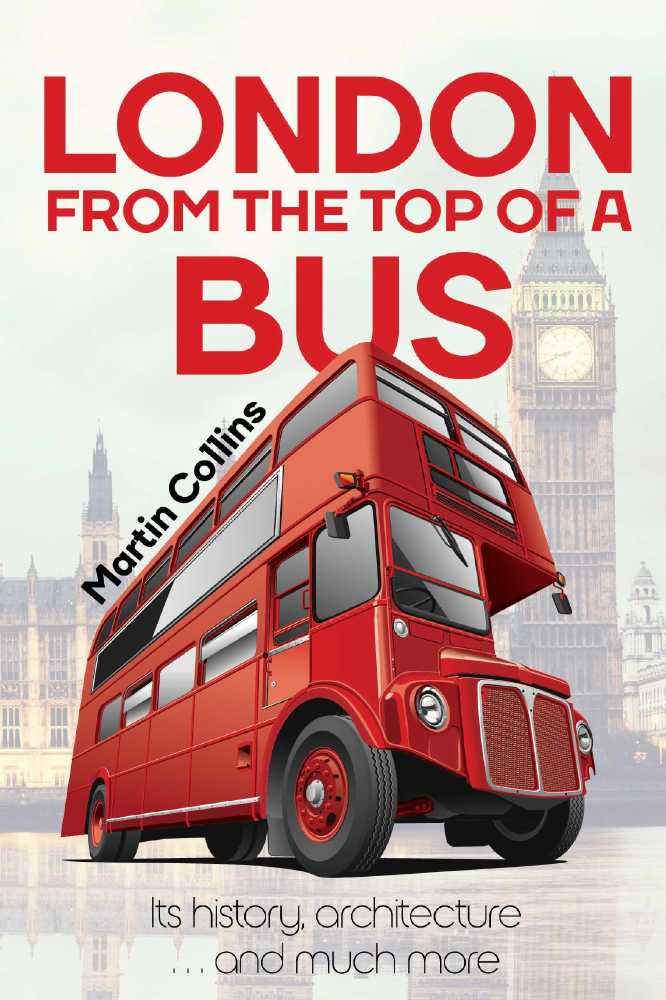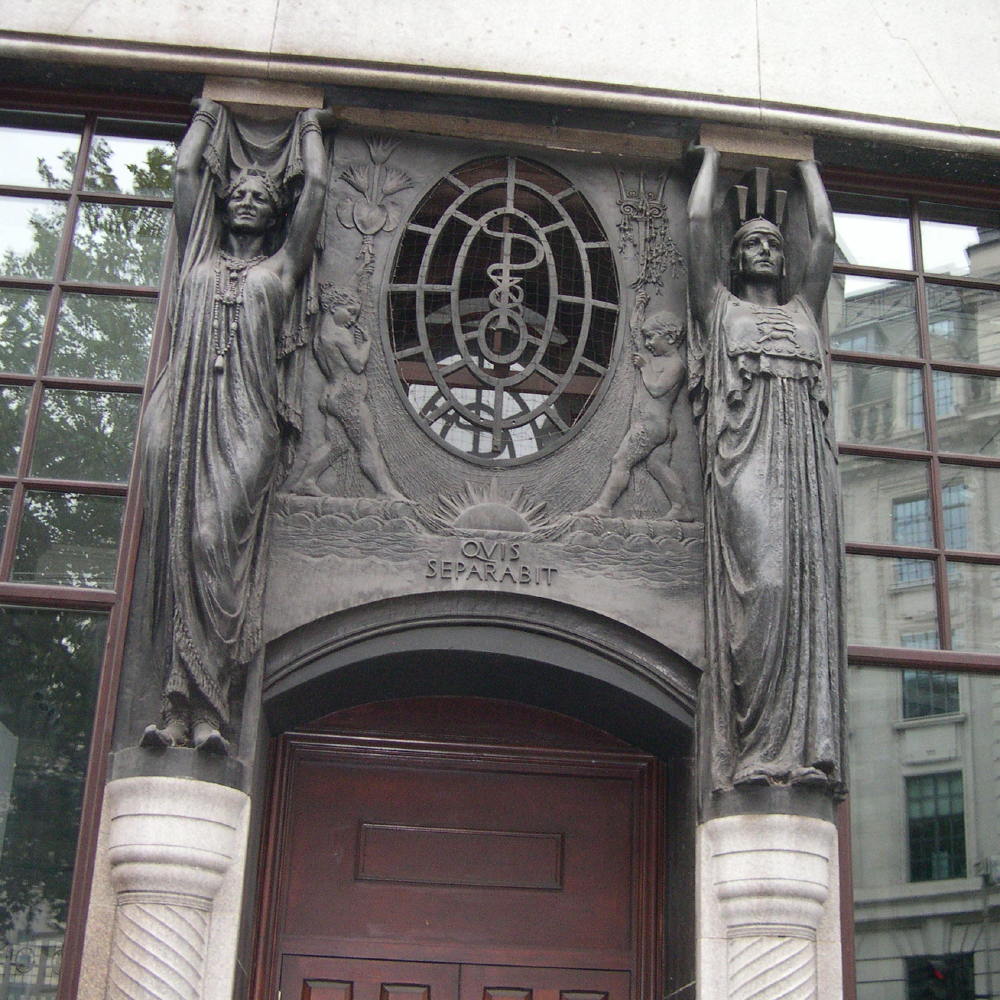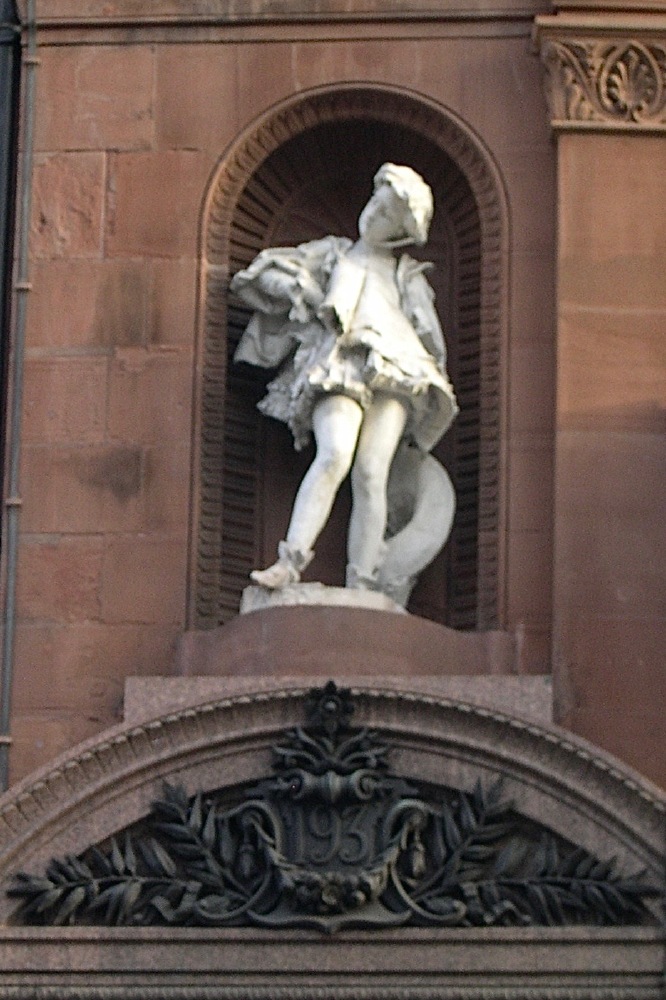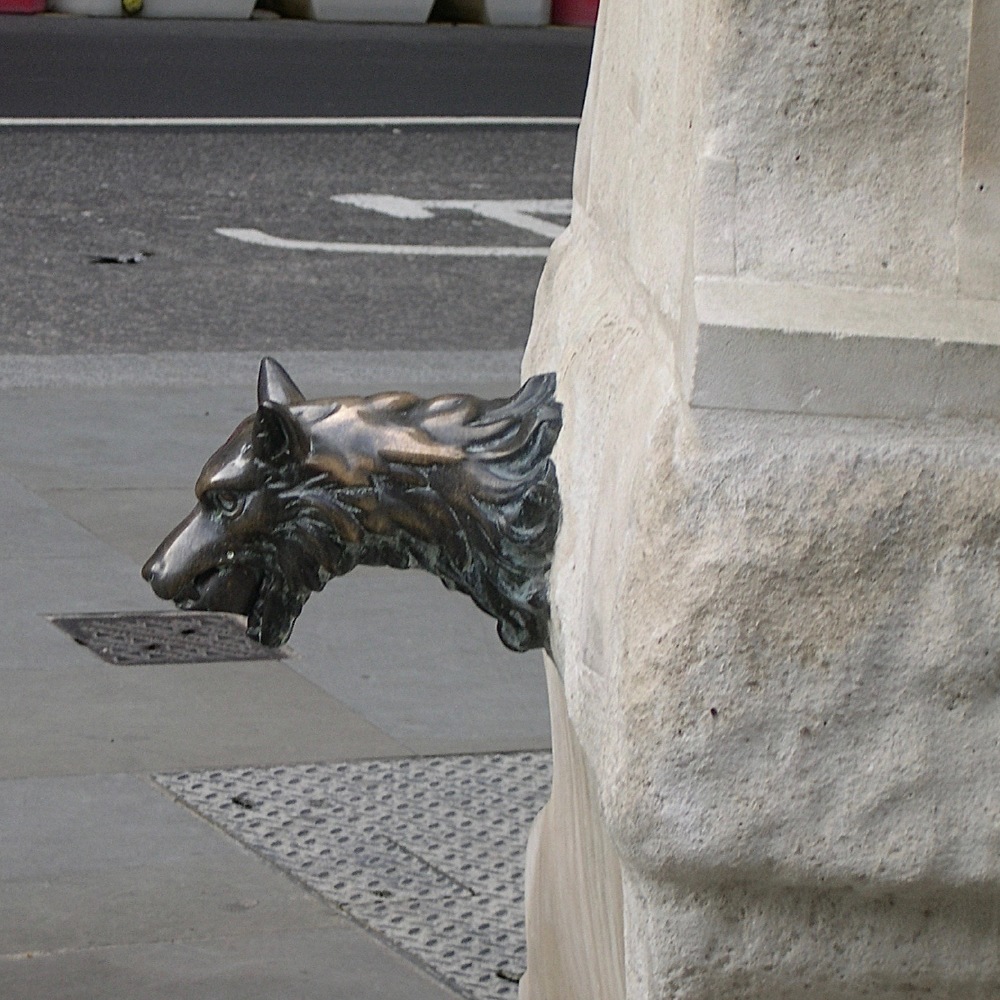All images courtesy of Martin Collins.

London From The Top of A Bus
We all do it. We get on a bus and just stare out of the window, our minds a complete blank, unless something on the street catches our eye, though the comedian Mrs Shufflewick went a bit too far. She used to relate how once tired and drunk she climbed the stairs to go to bed, took off all her clothes, only to find she was on top of a bus! Yet being on the top deck of a bus is a wonderful opportunity to see the enormous variety of interesting buildings and sculptures on London’s streets. Here are a few favourites.
The 88 bus travels along Regent Street where Liberty’s has at its top a 155 feet frieze, the longest in London, depicting Britannia and the wealth of distant countries being brought to London by camels, elephants and ships. Often unnoticed are the carved figures on the roof, looking down on it.
Across the road the 1898 Apple Store building has wonderful red and gold mosaics with heraldic shields, including those of the islands of Murano and Burano, Venice, as this was once the showroom of the Venice and Murano Glass and Mosaics Company. In a red and gold mosaic band are the names of other cities where the company also had showrooms.
As it travels down the Haymarket, on the east side, numbers 33-34 are unpretentious, brick shops built in 1741. Number 34 is considered the oldest shopfront in London. Freibourg & Treyer were tobacconists here from 1751 until 1970.
On its reverse journey the bus passes along Cockspur Street, where on what is now the Thai restaurant, but once the Norwegian embassy, is a statue if St Olav, the Patron Saint of Norway, but much respected in London. A number of churches in London were dedicated to him. He allegedly pulled down London Bridge, as in the nursery rhyme, when London was occupied by the Danes.

Further along, the Brazilian Embassy is a museum of sculptures as one looks upwards to the head of Neptune at the top. Particularly attractive are two caryatids (female supporting figures) above the doorway representing Asia, standing seductively, and Britannia dressed to kill!
The 15 bus travel though the City from Charing Cross to the Tower. In Fleet Street, at the corner of Chancery Lane, on George Attenborough and Son Jewelers, easily missed is a statue resembling an effeminate young man. It is actually of a woman dressed to look like a man, Kaled, Lara’s page, described in Lord Byron’s tragic poem, ‘Lara, A Tale’.

From the bus at Ludgate Circus, at the top of Leon’s restaurant, previously the King Lud pub, is a plaque with an image of King Lud, the mythical founder of London.
In Cannon Street, between Friday Street and Distaff Lane, is Bracken House, the Financial Times building. It is named after Sir Brendan Bracken founder of the current version of the paper.
Above the entrance is an elaborate astrological clock with signs of the zodiac surrounding a central fiery sun, which resembles Sir Winston Churchill’s face. Bracken was a staunch supporter of Churchill during the Second World War.
The 25 bus passes over Holborn viaduct where there are eight statues, the most in any one place other than Parliament Square seen on the 88 bus, where there are twelve.
The bus passes along Cheapside where on the corner of Ironmonger Lane is an image of St Thomas à Becket in the form of the token given to pilgrims who visited his shrine at Canterbury. He was born close by.
Further along at 54-55 Cornhill, on a terracotta building on the east side, are grimacing demons. Allegedly, on construction, the building infringed by a few inches land belonging to the neighbouring St Peter Cornhill church, which demanded the plans be redrawn. The demons scowl at anyone entering the church.
As the bus passes enters Aldgate Street, at its junction with Leadenhall Street and Fenchurch Street is the Aldgate pump. East London used to be referred to as ‘east of Aldgate pump’ and to ‘get the Aldgate pump’ is cockney rhyming slang for to get the hump, i.e. to be annoyed.
It was once known as the ‘pump of death’ as many died from drinking the polluted water that passed through graveyards from its source at Hampstead. A ‘draft on Aldgate pump’ referred to a worthless draft, or a fraudulent money transaction, such as a bounced cheque, it being a pun on a draught of the harmful water. Notice the brass spout in the shape of a wolf’s head. It allegedly marks the spot where the last wolf in London was slain, if that can that be believed?

For further descriptions of London’s buildings and sculptures, their history and architecture, the derivation of street names and interesting anecdotes, you might like to read : ‘London from the Top of a Bus’, by Martin Collins, recently published by Clink Street Publishing.
Tagged in London

